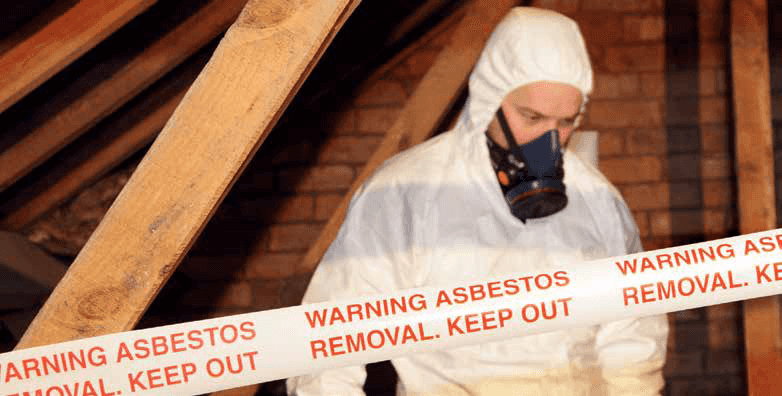
Dealing With Asbestos
Asbestos is a well-known hazard and new regulations mean it is now something landlords need to be on top of. Miriam Bell explains why and how.
1 September 2018
It is a notoriously nasty health hazard and it’s present in many buildings, both residential and commercial, around New Zealand. And now there are new rules surrounding it that concern landlords.
Is it meth contamination or black mould? No, it’s asbestos and it is a silent killer. While it doesn’t get the airplay awarded to meth or mould, according to WorkSafe, asbestos is the country’s single largest cause of deaths from work-related disease.
That’s relevant to landlords because new workplace health and safety asbestos regulations came into effect earlier this year and they apply to both commercial and residential property owners.
The Health and Safety at Work (Asbestos) Regulations 2016 mean that property owners with a property which is operating as a workplace must not only identify whether asbestos is present, but have an asbestos management plan in place.
While the new regulations are more applicable to commercial properties, they also apply to residential properties in certain situations, such as if the property is undergoing renovation, repair or maintenance work.
Hidden Danger
Many landlords might not think they have cause for concern, but asbestos was a common building material for many years. For that reason, it is believed that a significant proportion of New Zealand buildings contain some form of asbestos.
This is particularly the case for those built, altered or refurbished between 1940 and the mid-1980s. But while most modern buildings are less likely to contain asbestos or asbestos containing materials (ACM), it’s worth noting that a full ban on these products only came into effect in late 2016.
Additionally, asbestos-containing products can be found in lots of places. For example, it might be in vinyl flooring, interior and exterior wall cladding and soffits, fences, texture coatings, fireplaces, stoves, hot water cupboards, electrical switchboards, roofs, guttering and downpipes.
Asbestos Testing NZ’s Ryan Hamilton says that if the ACM is in good condition, and unlikely to be disturbed, it may not present a significant risk. “But it’s a different story if the ACM is in poor condition or damaged, or is moved in the course of renovations or repairs. Then it’s a risk.”
The fact that asbestos is in so many different materials and, therefore, potentially in so many different parts of a building means it can be hard to isolate and identify, Hamilton adds.
Yet the new regulations mean that landlords planning any sort of work on their property should establish whether there is asbestos present and what sort of risk it might pose.
Three Golden Rules
Herein lies the difficulty. Not only are many landlords unaware they are affected by the new regulations but, among those who are, there is uncertainty about what they are accountable for and what they are required to do.
ASA (Asbestos Survey Assessment) managing director Frank MacCullaich says that, in order for landlords to stay on the right side of the law, there are now three golden rules when it comes to asbestos.
“For a start, they need to know whether their property has any asbestos and if so what, where, how much and what condition it is in. Then they need to ensure that their tenants and other property users are not exposed to the risk of friable asbestos.
“Finally, they must have an asbestos management plan which must be kept up-to-date, reflecting any change in circumstances, and available to anyone carrying out work on the property. The plan should include information on where the asbestos is, what timetable is in place to leave or remove it, and what policies and procedures workers and tenants need to follow.”
Under the new regulations, it is also critical that landlords are aware of their “duty of care” as a “person conducting a business or undertaking” (PCBU).
That means if a landlord has no plans to do work on a property, and has taken “reasonable care” to establish there are no ACMs in a risky condition, they will have satisfied their “duty of care” and can carry on business as usual, MacCullaich says.
“But if there is planned work involving more than 10m2 area of ACM then a landlord will fall directly under the regulations. You will need an asbestos refurbishment/demolition survey conducted to identify what ACM is present, how much is there and the risk posed by the type and condition of the asbestos.”
Both MacCullaich and Hamilton recommend that landlords should get a professional asbestos surveyor to undertake a management survey report, compile an asbestos register, and implement a comprehensive asbestos management plan.
If asbestos is identified and needs to be removed, landlords should not attempt to remove it themselves. Removal requires an operator with Class A or B licence.
Duty Clarification
Due to widespread confusion after the new regulations first came into effect, WorkSafe had to release a policy clarification for residential landlords. It confirms that they are only required to identify asbestos and prepare a management plan when they are planning to carry out work on their property.
Further, the identification and plan process only needs to be conducted for the area relevant to the work creating a risk of exposure. But landlords do have to cooperate on these duties with other people involved in any such work, like property managers and building contractors.
This clarification is important because it means that asbestos management plans are not automatically required for all rental properties – contrary to what many people initially thought.


